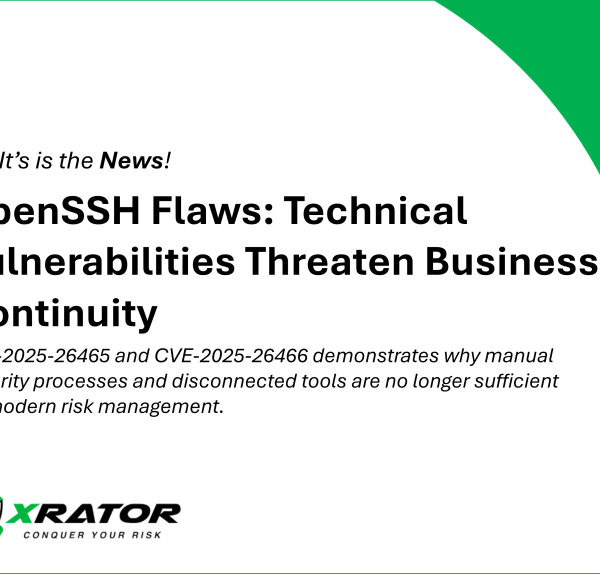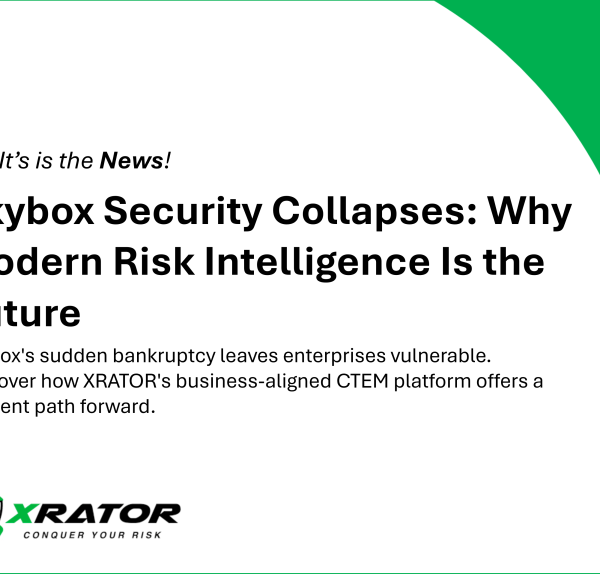Cybersecurity may seems complex at first glance because of technical term. Crack the cyber jargon is key to understand the new paradigm of securing business and societies in the interconnected modern world. The principles founded cybersecurity are yet known by every one. Follow us through analogies and simplification to crack the cyber jargon.
Crack the Cyber Jargon: Your Digital Armor
Imagine your online world as a fortress, where valuable data and systems reside. General security is the set of tools and practices that build and maintain its defenses, protecting against unauthorized access, theft, or damage. Think of it as your digital suit of armor, made up of several essential layers:
- Authentication: Verifying someone’s identity before granting access to systems or data. This acts as the gatekeeper, verifying who’s allowed in. Strong passwords, multi-factor authentication (MFA) like one-time codes, and biometrics like fingerprints are all common authentication methods.
- Multi-factor Authentication (MFA): It’s like having a double lock on your door – your password is key 1, and a code sent to your phone is key 2. Hackers can’t get in without both.
- Access Control: Once inside, not everyone gets free reign. Access control defines who can access what information and systems, just like assigning different keys to different rooms in your home.
- Encryption: Sensitive data deserves extra protection. Encryption acts like a secret vault, scrambling information into a code only authorized users can unlock, keeping prying eyes out.
- Updates and Patching: Imagine tiny cracks appearing in your fortress walls. Updates and patching fix these vulnerabilities in software before attackers can exploit them, keeping your digital fortress constantly reinforced.
- Incident Response: Even with strong defenses, unforeseen breaches can happen. An incident response plan is like a fire drill, outlining steps to contain damage, investigate the attack, and restore operations quickly.
- Backups and Recovery: Robust backups ensure you can restore lost or compromised data, minimizing the impact of a successful attack. This acts as a last resort to mitigate damage after a breach.
Host & Network Security: Armored Up and Alert
Just like your digital fortress has streets and roads, it needs internal defenses. Your network needs its own set of guardians to keep intruders at bay and manage digital traffic flows. Here’s your network security armory:
- Firewall: Your network’s bouncer, standing guard at the entry point, scrutinizing incoming and outgoing traffic. It’s like the first gate someone must go through before entering your digital fortress. Only authorized data gets through, while suspicious packets are rejected. Web Application Firewall (WAF) works on the same principal for internet facing web applications.
- Wi-Fi Security: Don’t let your wireless connection be an open door! Strong Wi-Fi security protocols like WPA2* and AES** encryption act like locks on your Wi-Fi doors, scrambling data so only authorized devices can access it. No freeloaders allowed!
* WPA2 is a security protocol for Wi-Fi networks, providing a robust layer of protection against unauthorized access. It ensures that only devices with the correct credentials can connect to the Wi-Fi network.
** In Wi-Fi security, AES encryption ensures that the information transmitted over the network is jumbled up and can only be deciphered by devices with the correct decoding key.
WPA2 manages identity access, AES encryption ensures that the data exchanged between devices is confidential and protected from unauthorized eyes.
- VPN (Corporate): Your fortress do have outpost on the open wild ? It may put at risk your caravane during the road between the castle and the border. Your great engineer build then a complex network of underground tunnel. Think of a VPN as a secure tunnel, encrypting your traffic and making your remote network like if it was one street of your main castle. Hackers won’t even know you’re there, let alone where you’re going.
- Antivirus, Anti-malware and EDR: These are your digital knights, constantly scanning your warehouses for malicious software (malware) such as ransomware. If they find someone suspicious, they quarantine threats before they can wreak havoc, keeping your systems safe and sound.
- Intrusion Detection and Prevention Systems (IDS/IPS): These are your network watchtowers, constantly monitoring traffic for suspicious activity. They can detect and even block intrusion attempts before they cause damage, acting like early warning systems for your digital domain.
Remember, host and network security is an ongoing process, not a set-and-forget solution. Just like maintaining your physical security, keeping your network defenses updated, monitoring for threats, and being prepared to adapt. With these vigilant guardians in place, your network can stay strong and secure, a house against the ever-evolving landscape of cyber threats.
Data Security: Safeguarding Your Information Fortress
In the digital world, your data is like the treasure kept inside a fortress. Data security includes the strategies and measures in place to protect this invaluable asset from unauthorized access, breaches, or compromise. Consider it as the moat, drawbridge, and guards of your information stronghold. Here are key components of data security:
Data Breach
A data breach occurs when unauthorized individuals gain access to sensitive or confidential data. Imagine someone breaking into your castle and stealing the treasure chest, gaining access to confidential customer information.
Data Privacy Regulations (GDPR, CCPA, etc.)
Regulations such as GDPR (General Data Protection Regulation) and PDPA (Personal Data Protection Act) set legal standards for the collection, processing, and storage of personal data. Think of these regulations as the king that dictate how you must handle and protect the personal information of your kingdom’s residents.
- GDPR : GDPR is a comprehensive data protection regulation enacted by the European Union (EU), governing the processing and protection of personal data of individuals within the EU. It applies to all companies in the world dealing with EU citizens’ data.
- PDPA: PDPA is data protection legislation in Singapore that regulates the collection, use, and disclosure of personal data by organizations operating in Singapore.
- APEC Privacy Framework: The APEC Privacy Framework is a set of principles and guidelines established by the Asia-Pacific Economic Cooperation (APEC) for ensuring privacy protection in the cross-border flow of personal data among member economies.
- California Consumer Privacy Act (CCPA): CCPA is a comprehensive data protection regulation enacted by the USA’s state of California, governing the processing and protection of personal data of individuals within California. It applies to all companies in the world dealing with californian citizens’ data.
Data Classification and Labeling
Data classification involves categorizing data based on its sensitivity and importance, while labeling helps identify and manage different types of data. Just as you label different sections of your fortress (armory, treasury), data classification and labeling ensure that each piece of information is treated according to its importance.
Data Loss Prevention (DLP)
DLP is a set of tools and policies designed to prevent unauthorized access, sharing, or loss of sensitive data. Picture DLP as the vigilant guard at the castle gate, inspecting everyone who enters and exits to ensure nothing valuable is taken without permission.
Remember, by implementing robust data security practices, you fortify your digital fortress, ensuring that your valuable information remains shielded from the ever-present threats in the digital realm.
Social Engineering: Understanding Digital Manipulation
Delves into the psychological tactics used by attackers to deceive individuals into revealing confidential information. This section unpacks the art of digital persuasion, highlighting the diverse strategies employed in the cyber realm.
Phishing
Phishing is a deceitful attempt to acquire sensitive information, such as usernames, passwords, or financial details, by posing as a trustworthy entity. It’s like receiving a fake email that looks like it’s from your bank, asking you to provide your account details.
Pretexting
Pretexting involves creating a fabricated scenario to deceive individuals into divulging sensitive information. Imagine someone posing as a colleague, pretending to need your login credentials for a work-related task.
Tailgating: Sneaky Follow-Up
Tailgating occurs when an unauthorized person physically follows a legitimate user into a secure area, exploiting their access. Picture someone slipping through a door behind you at work without proper authorization, gaining access to restricted areas.
Watering Hole Attacks: Ambushing Favorite Spots
Watering hole attacks involve compromising websites frequented by a target audience to distribute malicious software or gain access to sensitive information. It’s like hackers placing a trap on a popular website that your team often visits, infecting your systems when you access it.
Shoulder Surfing
Shoulder surfing in cybersecurity refers to the practice of spying on someone’s screen or keypad to steal passwords or other sensitive information. While you are in a queue line, at the aerport, in a cafe or in a train, everything you type and everything displayed on your screen can be watched by a malicious actor.
Compliance: Navigating Digital Regulations
Compliance in cybersecurity involves establishing and monitoring a set of practices that define the minimal security baseline necessary for protecting data and systems. This section guides organizations through the complex landscape of legal and industry standards to ensure this foundational security level is achieved and maintained.
Singapore Cybersecurity Essentials Mark (CEM)
The Cyber Essentials Mark scheme is designed by Cyber Security Agency of Singapore (CSA) to help organizations, including SMEs, implement basic cybersecurity practices and protect against common online threats.
CTM – Cyber Trust Mark Singapore
CTM in Singapore is the Cyber Trust Mark, a certification that signifies adherence to cybersecurity best practices and a commitment to protecting digital assets. Attaining the Cyber Trust Mark is like receiving a badge that assures customers and partners of your organization’s trustworthy cybersecurity practices.
ISO 27000 series
ISO 27001 outlines the requirements for an information security management system, helping organizations establish and maintain robust security measures for the security baseline.
Going further
Internet of Things (IoT) Security: Safeguarding Connected Devices
IoT security involves protecting the network of interconnected devices, ensuring they cannot be exploited to compromise overall system security. Securing smart home devices to prevent unauthorized access and protect personal privacy is a key aspect of IoT security.
Operational Technology (OT) Security: Protecting Industrial Systems
OT security focuses on safeguarding industrial control systems and operational technologies from cyber threats. Ensuring the security of machinery and control systems in a manufacturing plant to prevent disruptions or unauthorized access is a priority in OT security.
Artificial Intelligence (AI) Security: Guarding Against Algorithmic Threats
AI security involves protecting artificial intelligence systems from manipulation, attacks, or misuse that could compromise their functionality and outcomes.
Implementing measures to ensure that machine learning models are not vulnerable to adversarial attacks or biased inputs is crucial for AI security.
Blockchain Security: Safeguarding Decentralized Ledgers
Blockchain security focuses on protecting the integrity and confidentiality of data stored in decentralized ledgers, preventing unauthorized alterations. Ensuring that a blockchain-based voting system remains tamper-proof and secure from manipulation is a key concern in blockchain security.
Final words
Remember, in the realm of cybersecurity, knowledge is power. Our SME-friendly glossary, “A SMEs Guide to Cybersecurity: Crack the Jargon,” is your key to decoding digital security complexities. From fortifying your digital armor to guarding against data breaches and emerging threats, this guide empowers SMEs with essential insights. Whether it’s compliance, trustworthy practices, or staying ahead with trends like IoT and AI security, let this glossary be your go-to resource. Stay informed, stay secure, and propel your business confidently through the dynamic landscape of cybersecurity.






